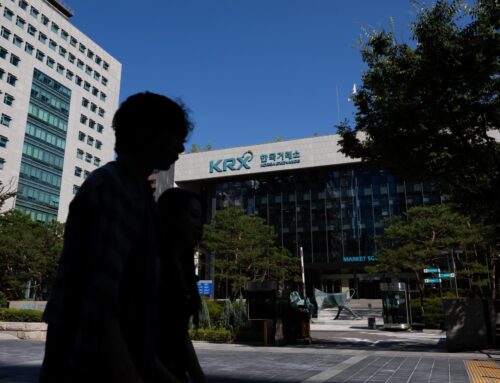This Project Lets You Send Bitcoin Without Internet Access
May 26, 2025
In brief
- Darkwire lets users send Bitcoin transactions over LoRa radio in regions without internet, power, or cellular networks.
- Transactions hop node-to-node until reaching an internet-connected exit point that broadcasts to the Bitcoin network.
- The system targets censored regions, disaster zones, and privacy-focused users seeking to bypass surveillance.
A new open-source project has created infrastructure that will enable users without Internet access to send Bitcoin transactions.
Named darkwire and submitted to the Bitcoin 2025 Official Hackathon, the open-source project makes use of long-range radio and is designed to enable off-grid communication.
It has been conceived and designed by pseudonymous programmer ‘cyber’ who is currently pursuing a degree in artificial intelligence and machine learning.
Talking to Decrypt, cyber explained that darkwire may be necessary or desirable in situations where traditional communication infrastructure, such as the Internet, power grid, or cellular networks, is “unavailable or controlled”.
Cyber gave the example of “censored or politically sensitive regions” such as the Rafah Crossing or Indo-Tibetan border, as well as disaster areas where infrastructure may have been destroyed or taken offline.
“[darkwire is for] individuals seeking privacy or wishing to bypass surveillance of their communications and transactions,” they said, adding that the framework isn’t for more casual Bitcoiners.
“Imagine it to be akin to Tor but for this specific use case,” they add. “While bitcoin is (somewhat) private, it fails when governments and regimes simply cut your internet supply off, darkwire aims to solve this specific issue.”
In terms of how darkwire actually works, cyber explains that the framework uses Long Range Radio (LoRa) to create a decentralized mesh network, allowing devices to send small packets of data, such as text messages or Bitcoin transactions, over distances of several kilometers without needing traditional Internet connections, cellular networks or satellites.
“At least one node in the network needs to be connected to the internet, so that the transaction can be pushed to the blockchain for miners to verify it,” cyber said.
From node to node
Aside from long-range radio transceivers, darkwire also makes use of microcontrollers, such as Ardoino UNO, to form a mesh network—a decentralized network in which multiple nodes are connected to multiple other nodes, with no centralized access point.
“When a user wants to send a Bitcoin transaction using the darkwire GUI, they specify the recipient address and amount using a local wallet managed by bitcoinlib (a python library),” cyber said.
Once this has been done, the darkwire graphical user interface generates a signed raw Bitcoin transaction in hexadecimal format, with the raw transaction hex then being sent from the computer (via a serial connection such as USB), to a darkwire node (which is a combined microcontroller and LoRa device).
They add, “the darkwire node takes this transaction data, fragments it into smaller packets if necessary, and transmits it wirelessly using LoRa.”
In ideal conditions, each darkwire node has a range of 10km with direct line of sight, although in more densely populated environments the range would be between 3km and 5km.
“In the mesh network, other darkwire nodes receive these packets and relay them forward, hopping from node to node,” cyber continues, adding that this process goes on until the transaction data reaches a designated darkwire node that does have internet access.
“This internet-connected node acts as an exit point, broadcasting the collected and verified raw Bitcoin transaction onto the global Bitcoin network, where it can then be included in a block,” they say.
Just the beginning
At the moment, darkwire remains an entry in the Bitcoin 2025 Official Hackathon, but cyber aims to develop the project further, refining it into a mature open-source platform and making it “the industry standard” in LoRa-based comms.
“This obviously cannot be done by me alone, so I’d appreciate open-source contributions as well,” cyber said.
The programmer also noted that they’ve yet to implement several darkwire features, such as the UTXO retrieval for messages, encryption for messages, and also uploading to Nostr (an open-source protocol for transmitting messages).
And given that darkwire is still very much a work in progress, cyber acknowledged that it currently has a few limitations that may be resolved over time.
This includes the relatively low bandwidth of LoRa radio and LoRa’s sensitivity to terrain obstacles, as well as the dependence of darkwire nodes on Internet exit nodes that could become points of failure.
But over time, as darkwire networks grow, such limitations should be significantly improved, providing Bitcoin users in less favorable environments with the means to send transactions to Bitcoin validators elsewhere in the world.
And at a time when the world is becoming increasingly authoritarian and undemocratic, darkwire may end up becoming a vital tool in the ongoing use and growth of Bitcoin.
“I do hope people living in any kind of authoritarian regimes and states do get to use darkwire and put the truth out there,” cyber said.
Edited by Sebastian Sinclair
Daily Debrief Newsletter
Start every day with the top news stories right now, plus original features, a podcast, videos and more.
Search
RECENT PRESS RELEASES
Want to Start the New Investing Year Off Right? 3 Warren Buffett-Inspired Moves to Make Be
SWI Editorial Staff2025-12-13T19:23:38-08:00December 13, 2025|
Risk-loving Korean investors made to watch training video before trading
SWI Editorial Staff2025-12-13T19:23:06-08:00December 13, 2025|
Pinnapuram Integrated Renewable Energy Project transforms barren land into world’s largest
SWI Editorial Staff2025-12-13T18:20:39-08:00December 13, 2025|
Athena Bitcoin Highlights the Power of Decentralization as the World Reflects on Satoshi N
SWI Editorial Staff2025-12-13T18:19:37-08:00December 13, 2025|
Investing in Our Communities: Northern New Jersey Community Foundation presents Grant Awar
SWI Editorial Staff2025-12-13T18:09:12-08:00December 13, 2025|
Greed vs. fear at $3K: Inside Ethereum’s make-or-break moment
SWI Editorial Staff2025-12-13T16:17:52-08:00December 13, 2025|
Related Post




